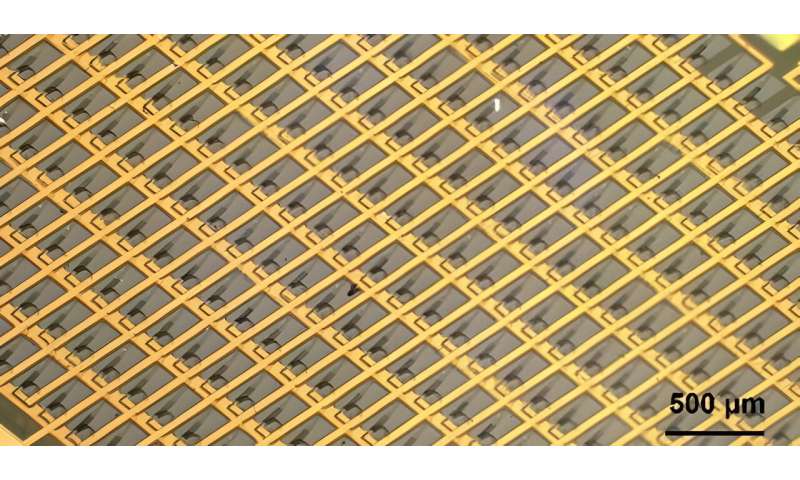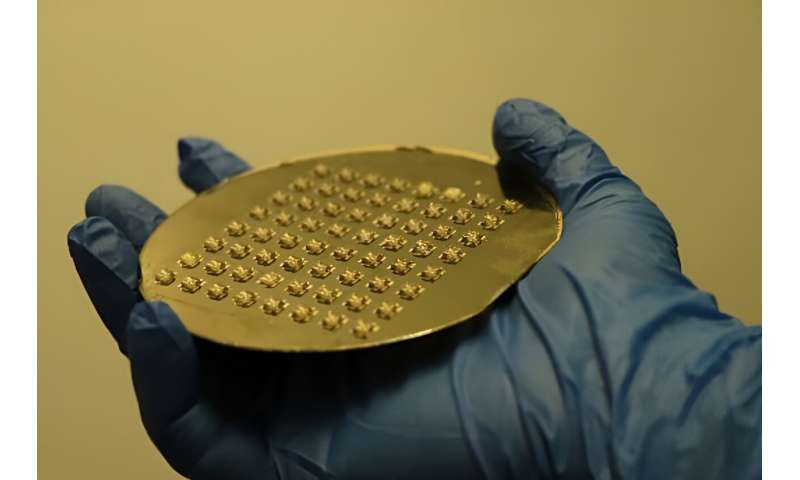Imagine a set of flexible tactile sensors that adheres to the surface of your skin, offering customizable detection of biomechanical signals from various body parts. That fiction-like supermaterial is close to becoming reality thanks to recent research.
In a study published in the journal Science Advances, researchers from Peking University have developed a set of flexible, modular tactile sensors utilizing 3D micro strain gauges as sensing units, achieving high-density mapping of pressure, wireless monitoring of biomechanical signals, and decoupled measurement of temperature, normal force, and shear force.
Han Mengdi from Peking University, the corresponding author of the paper, explained, “These 3D micro strain gauges offer exciting possibilities for developing flexible tactile sensors and electronic skins. By transforming planar strain gauges into 3D forms using a process compatible with lithographic techniques, we can expand the sensing modality and improve the spatial density in tactile sensing.”
The 3D micro strain gauges driven by thin film stress exhibit good consistency and stability, demonstrating excellent parallelization and mass processing capabilities. The process is fully compatible with microfabrication (the process of fabricating miniature structures of micrometer scales and smaller), and the fast and stable transfer method allows for seamless integration with microelectronics and microelectronics.

Credit: Science Advances (2024). DOI: 10.1126/sciadv.adp6094
-

Credit: Peking University
“Based on the processing technology of 3D micro strain gauges, we can quickly customize the performance of sensors,” said Chen Xu, a Ph.D. student in Han’s lab and a co-first author of the paper.
“By adjusting the shape of the 3D microstructure, the thickness of each layer of thin film, and the thickness of the encapsulating polymer, the sensitivity and other properties of the tactile sensor can be easily changed.” This provides a solid foundation for quickly customizing flexible tactile sensors and electronic skins that meet various needs.
“Each flexible sensor contains four 3D micro strain gauges oriented orthogonally, allowing precise decoupling of normal force and shear force to determine the direction and magnitude of external forces. The sensor also incorporates a temperature sensing module,” noted Yiran Wang, a Ph.D. student in Han’s lab and a co-first author of the paper.
“We also designed an anti-crosstalk circuit to support the spatiotemporal mapping of normal and shear forces at the skin interface using an array of our 3D micro strain gauges,” Wang added.
These 3D micro strain gauges show compatibility with both microelectronics and macroelectronics and provide opportunities for potential applications from robotics to biomedicine and consumer electronics. This technological approach enhances the sensing performance and integration solutions of flexible tactile sensors, heralding enormous opportunities in microelectronics and microelectronics.
More information:
Chen Xu et al, Three-dimensional micro strain gauges as flexible, modular tactile sensors for versatile integration with micro- and macroelectronics, Science Advances (2024). DOI: 10.1126/sciadv.adp6094
Citation:
3D micro strain gauges promote sensing capabilities of electronic skins (2024, September 12)
retrieved 12 September 2024
from https://techxplore.com/news/2024-09-3d-micro-strain-gauges-capabilities.html
This document is subject to copyright. Apart from any fair dealing for the purpose of private study or research, no
part may be reproduced without the written permission. The content is provided for information purposes only.

